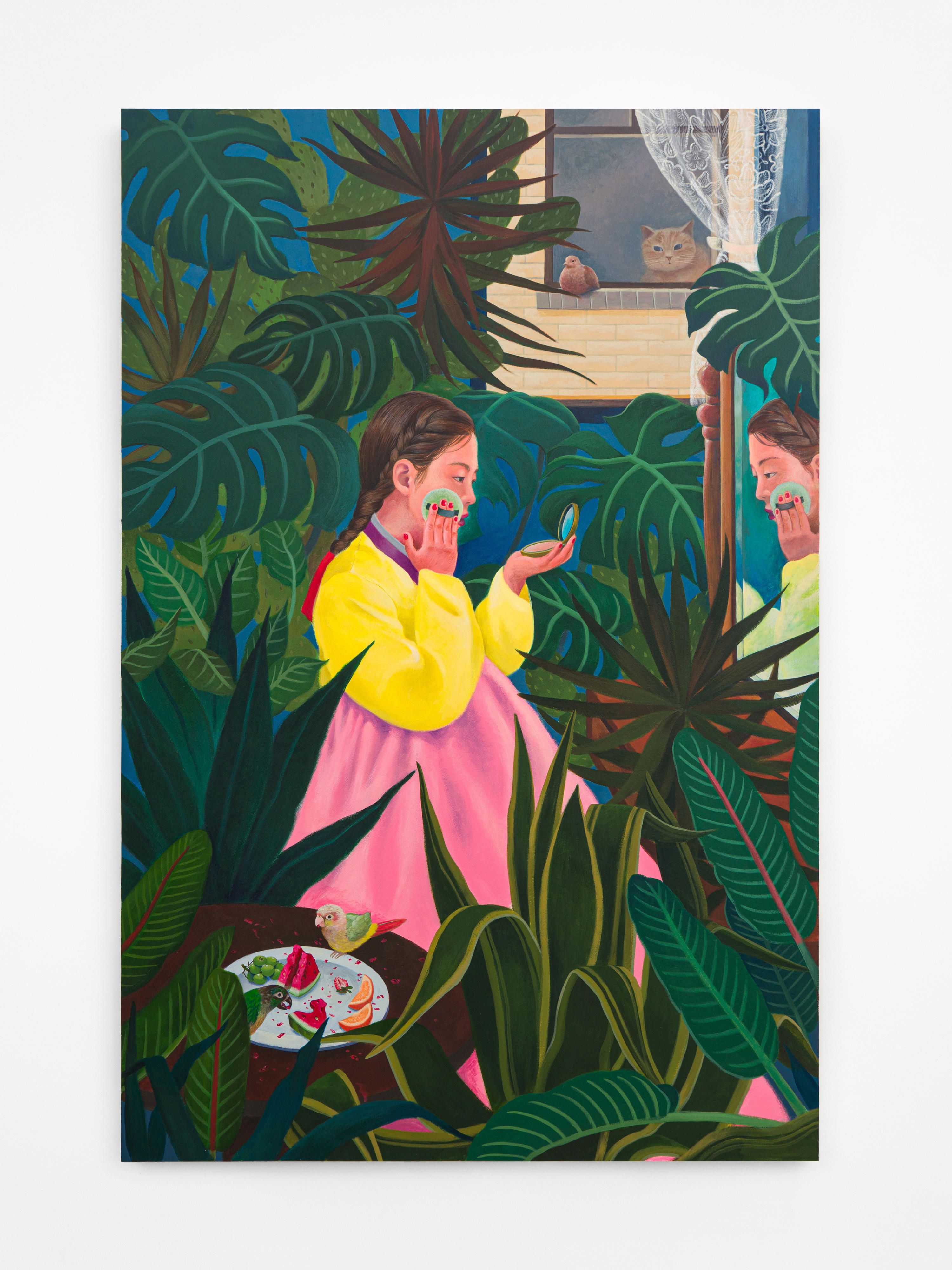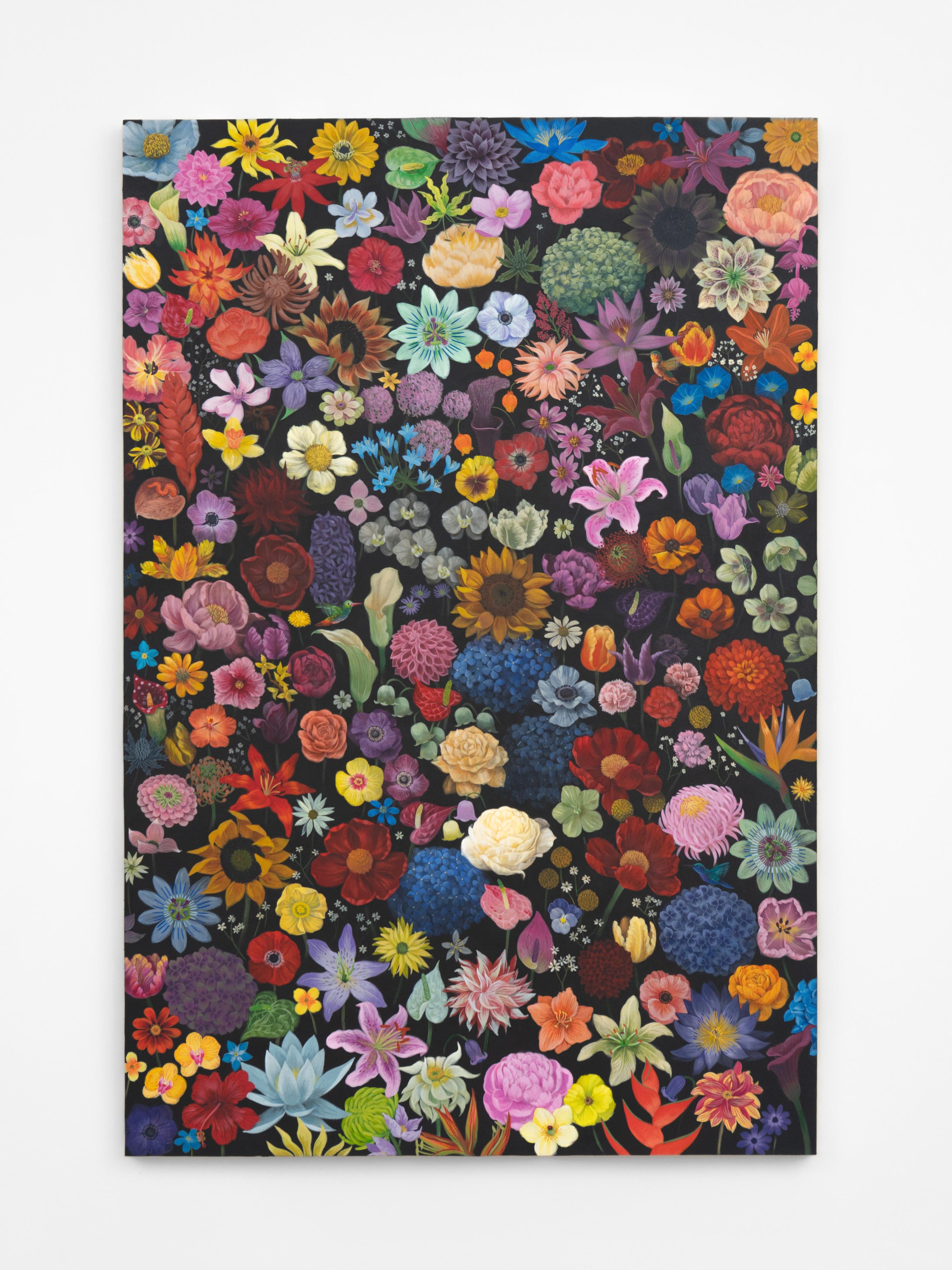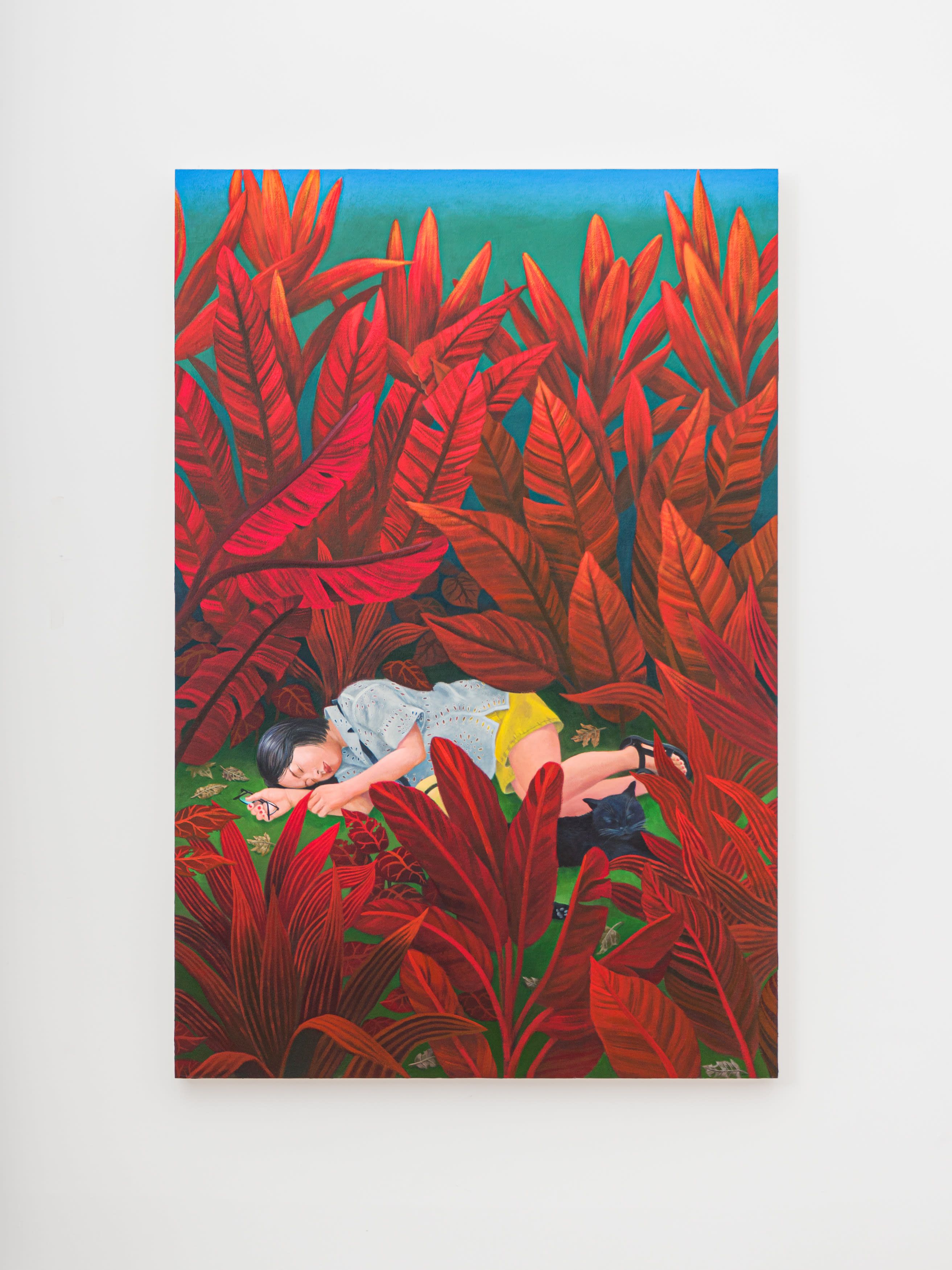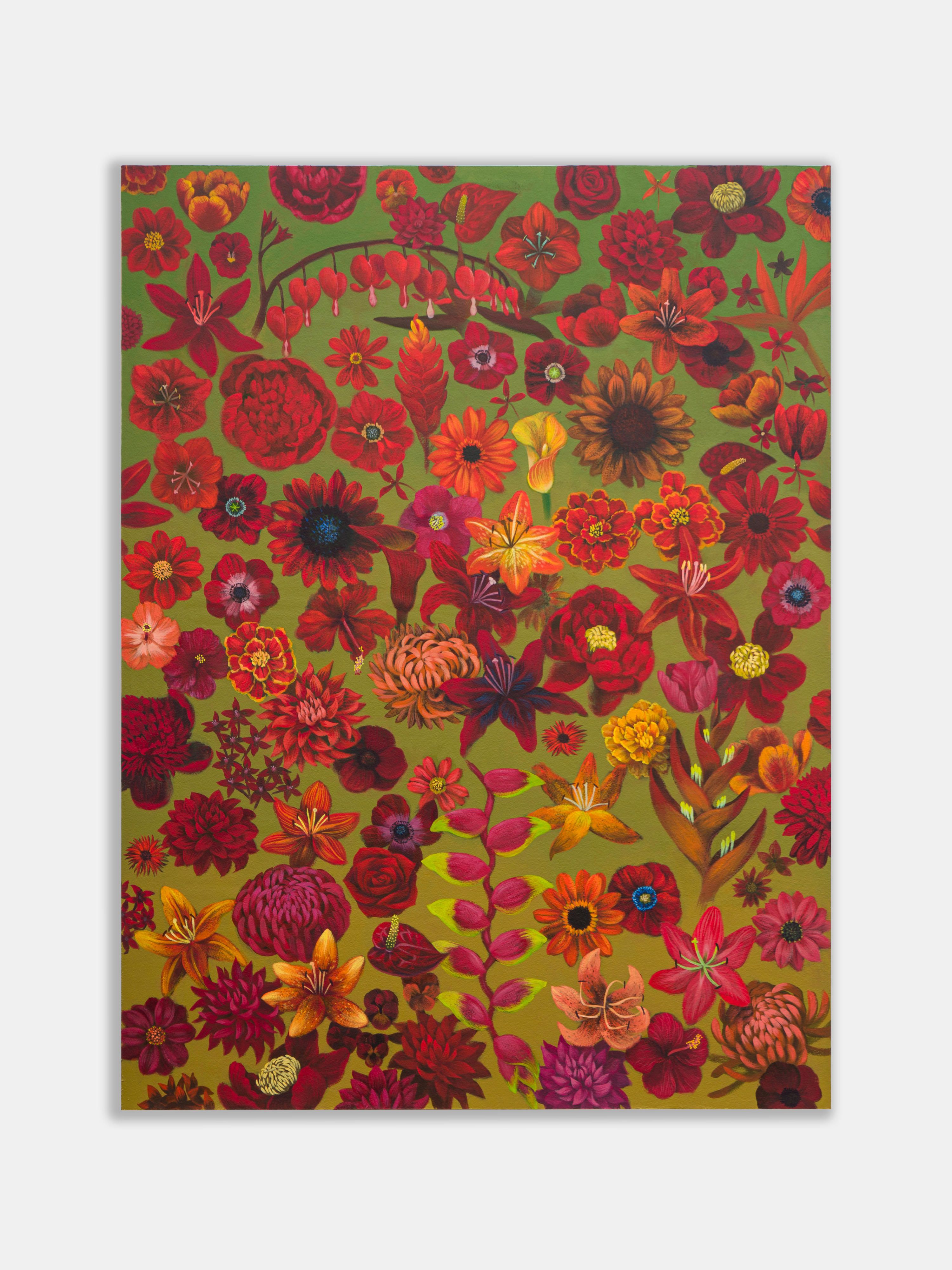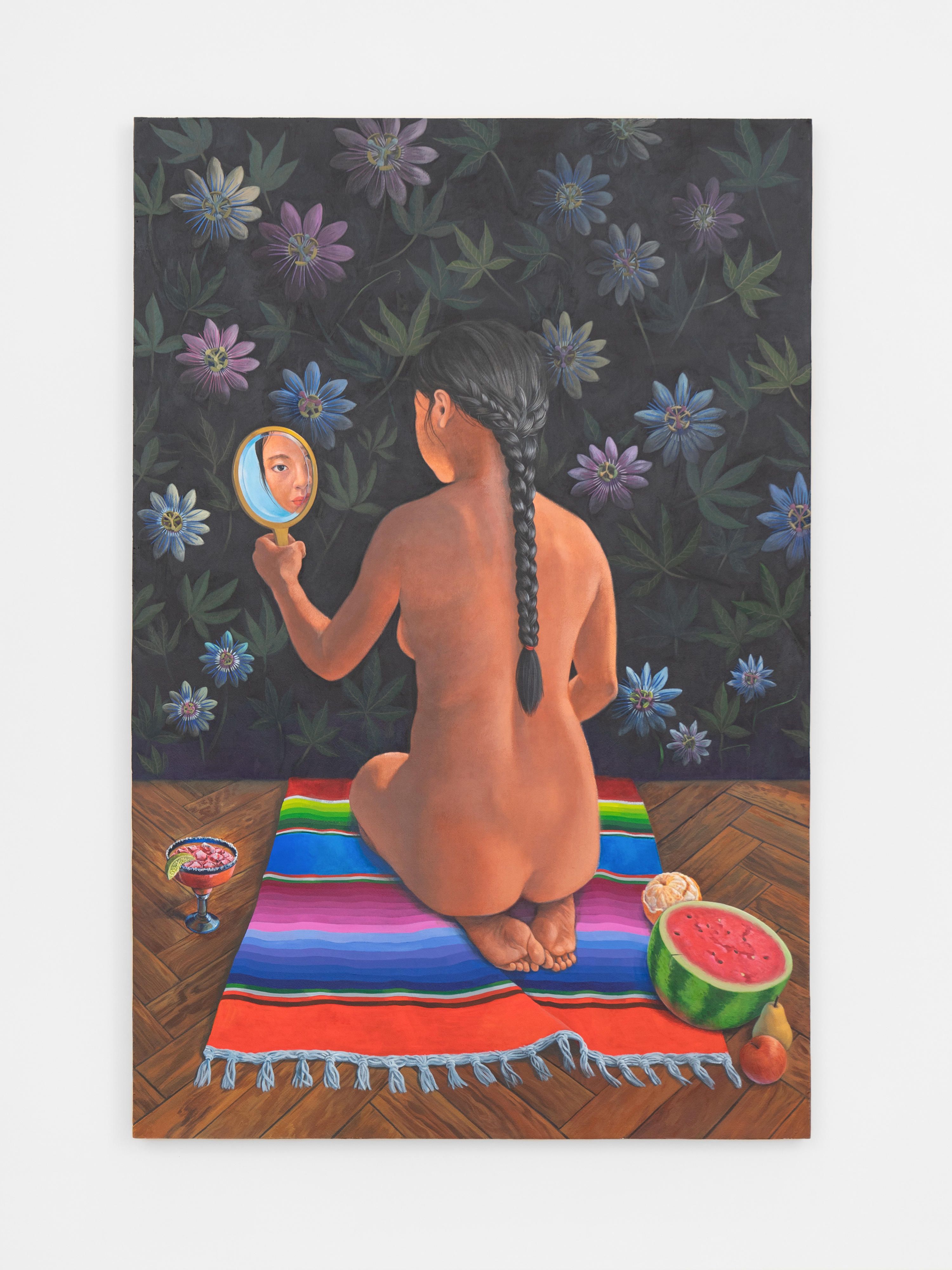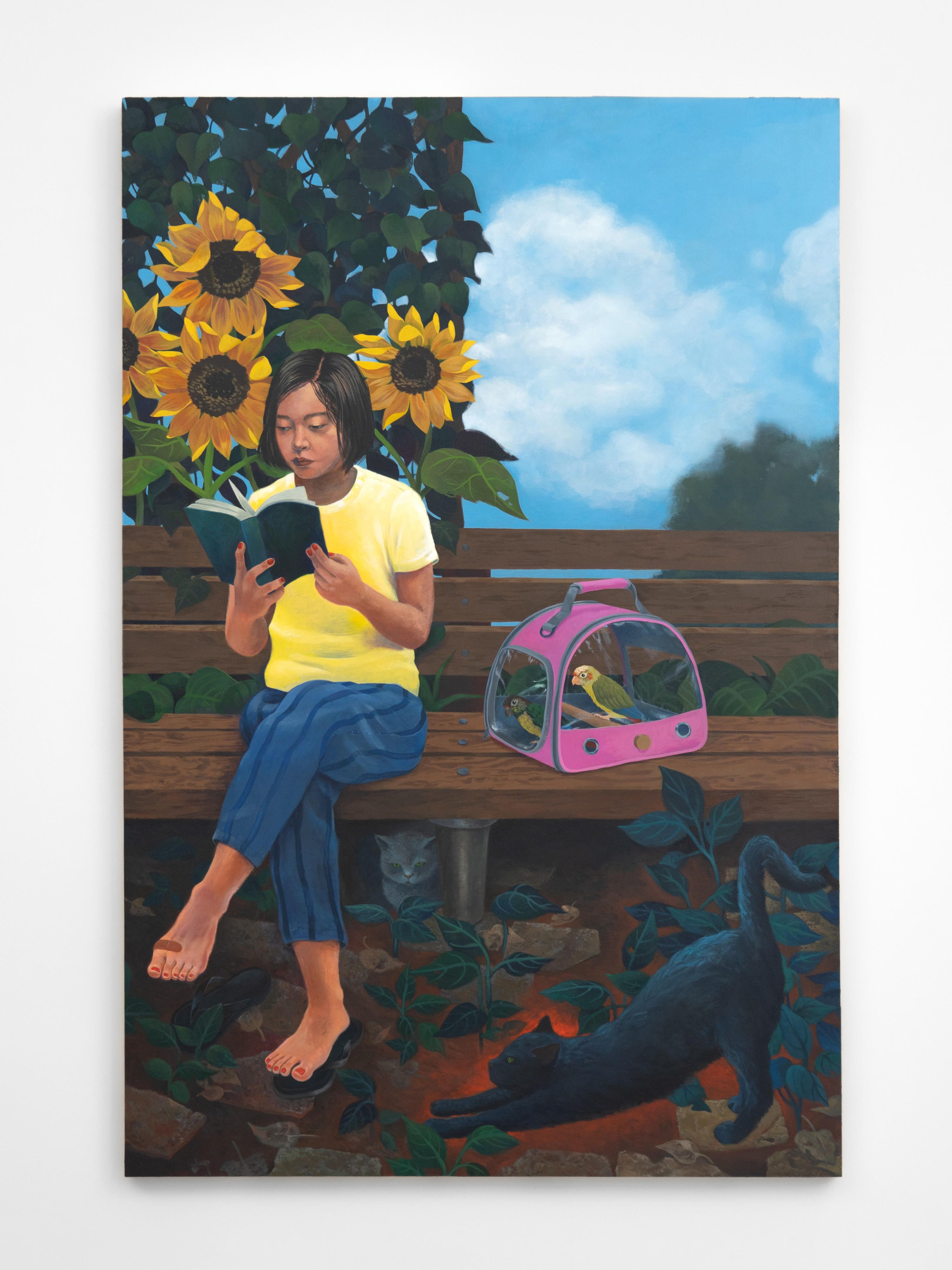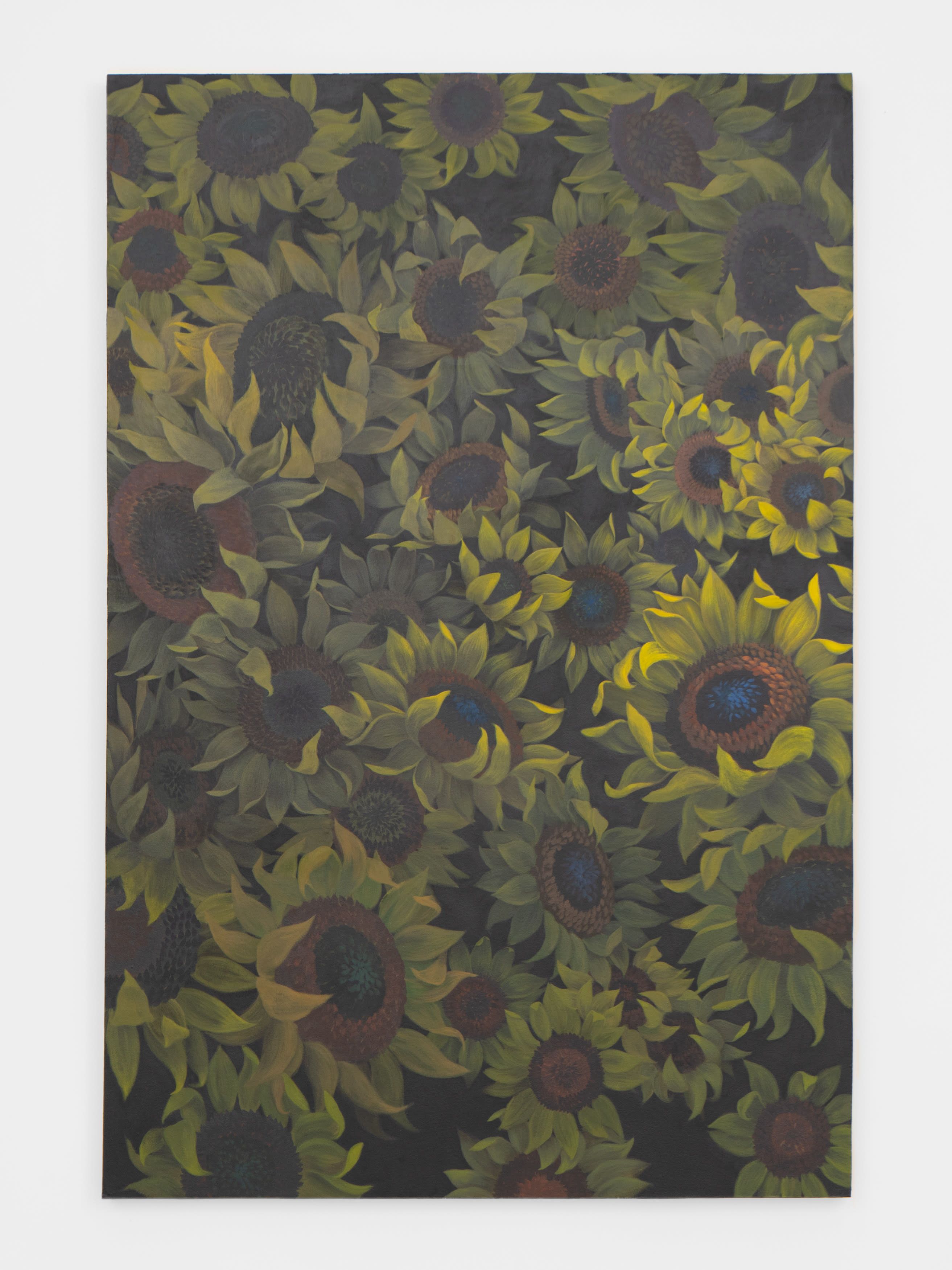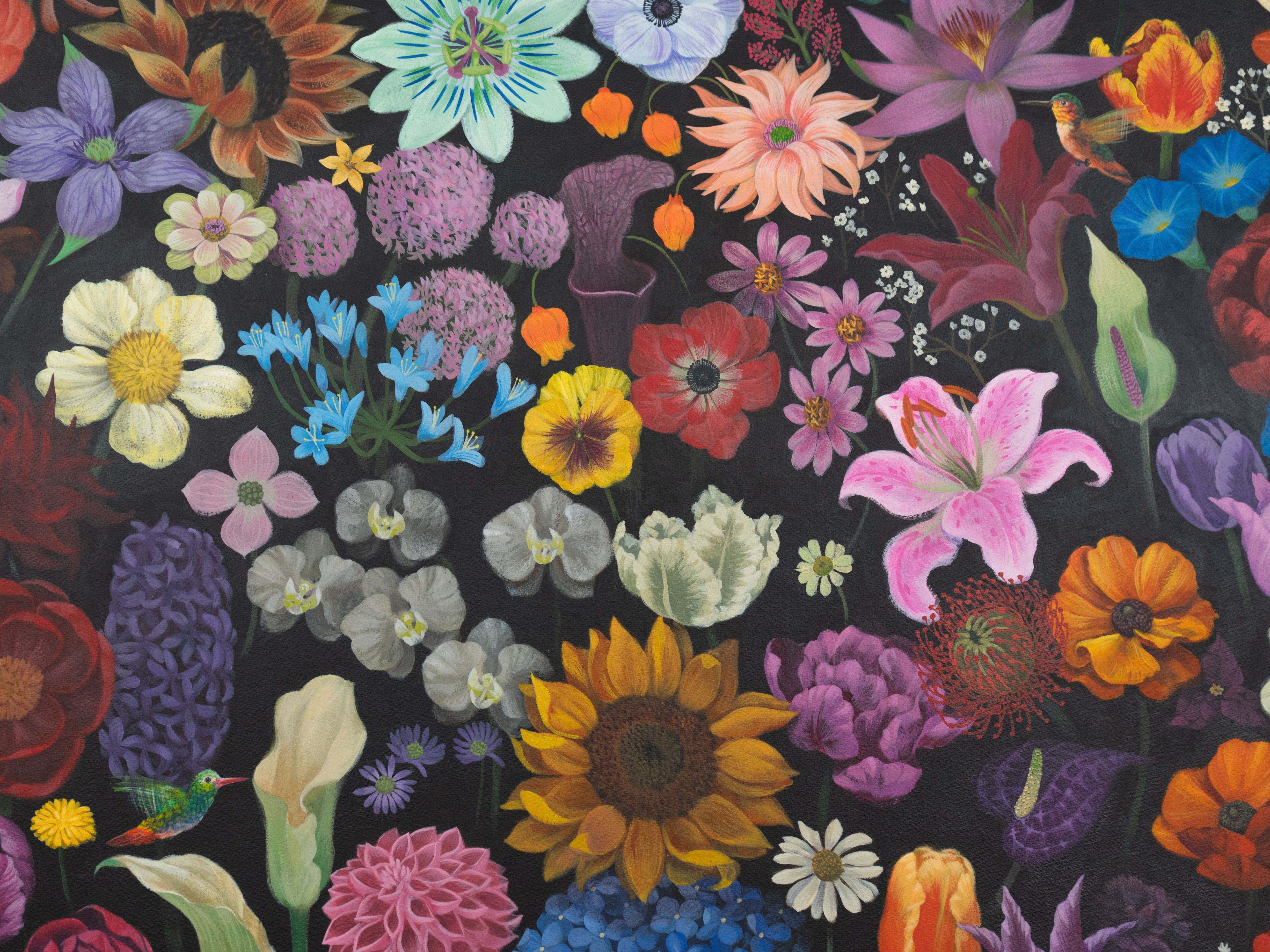
Sally J. Han Wallflower
Artwork
WALLFLOWER
Exhibition essay by Fabiola Alondra
...flowers are hauntingly delicate like a sigh of nobody in the dark.
- Clarice Lispector, Água Viva
The scent of flowers is mortal. We revere at their fragrant altar. They allude to the past and bind us to the present, reminding us of our fleeting existence. In pre-Columbian Mesoamerican cultures, each plant, tree, and flower were essential in metaphorical communication. Throughout history, people have used them to convey what words could not.
For Sally J. Han, painting is devotion, an act of reverence for the everyday. Like flowers expressing the inexpressible, Han rarely offers explanations for her work; instead, the experience unfolds on us. We are guided by the details she paints: blossoms, lush foliage, birds, mirrors, books, the hands that hold them, a Band-Aid on a foot, bruised fruit, and the way light touches braided hair. Her work is bare before us, inviting us to simply be with what is depicted. Han bookmarks an inventory of New York City from her memory bank: floral displays, playful bodega cats, birdsong-filled gardens, readers on benches, and window-gazing felines. Han’s environment was not always New York; she was born in China as a Joseon-jok (ethnic Korean), but spent most of her early youth in South Korea before settling in the US as a high school student. She hints at this cultural history in Fiesta, where the figure wears a Hanbok, traditional Korean attire with a rich 1,600-year history. In Fiesta, Siesta, and Sunday at the Park, Han’s likeness recurs, but these are not self-portraits. Instead, she embraces ambiguity, suggesting it could be her or another. Her paintings invite us to look beyond the perceivable and into an interior world.
Why do sunflowers belong to the realm of the sun? Greek myth tells of Clytie, a nymph whose unrequited love for Apollo left her eternally bound to the sun. Han’s Light from the Window is a receptacle for the sunflower’s longing: emerging from darkness, the golden petals twist in varied directions, as though each is fighting for the sunlight. There is a terrorlike beauty in their struggle. And the calla lily? Next time you encounter one, think of Hera, queen of the gods. While she slept, Zeus placed infant Hercules at her breast. Startled, Hera pushed him away. Her spilled milk formed the Milky Way, and the drops that fell to Earth created the first calla lilies, scattered throughout Han’s paintings like whispered fragments—Moondrop, Bouquet, Night Flowers. These floral dreamscapes are painted in a surreal register: alizarin crimson bleeding into sap green; phthalo green humming with vitality; cadmium yellow glowing beside quinacridone magenta; yellow ochre murmuring of earth.
Wallflower, the term and exhibition title, carries dual meanings in English. Botanically, it refers to plants that often grow along walls; figuratively, it describes someone who remains on the sidelines of social situations. This metaphor arises from the plant’s silent, peripheral presence, mirroring individuals who observe rather than participate. From a sociological perspective, this behavior can be viewed through symbolic interaction theory, where social withdrawal expresses internal landscapes. Wallflowers are, above all, quiet witnesses, rooted in the margins, attentive to life. Han embodies this sensibility in temperament and artistic practice. Like the solitary figures in her paintings, she cultivates a form of seeing shaped by contemplation and awareness. These women (and Han herself) are not passive, but self-contained; not isolated, but immersed in their rich inner sanctum. They do not demand attention, yet they hold it.
Carnation – Refusal, Disdain
Chrysanthemum – Cheerfulness under adversity
Dahlia – Instability
Daisy – Innocence
Dog Rose – Pleasure and pain
Marigold – Grief
Night-blooming cereus – Transient beauty
Orchids – "I arise from dreams of thee" —Shelley
Peonies – Shame, Bashfulness
Ranunculus – Radiant with charm
Rhododendron – Danger, Beware
Scarlet Poppy – Fantastic extravagance
Sunflower – Adoration
Wallflower – Fidelity in adversity
—The Language of Flowers, 1877
Fabiola Alondra (b. 1984, Mexico City) is a New York-based visual researcher, writer, and curator drawn to the pre-modern world. Interdisciplinary practice integrates art, archaeology, and history, exploring material/immaterial intersections. Beyond conventional accounts of the past, she is captivated by cultural history, esoteric traditions, folklore, and historical perspectives on magic and the supernatural. She holds a BA in Art History/History from Hunter College, New York, and a Master of Letters in Art History/Theory from the University of Glasgow (2010). She began as an archive cataloguer in Alex Katz’s studio before serving as director and researcher for rare book dealer John McWhinnie. In 2012, she launched Richard Prince’s art and book space, Fulton Ryder, and later became Publishing Director at 303 Gallery. She was the co-founder, director, and curator of Fortnight Institute from 2016 to 2024.
For more information about this exhibition and the work of Sally J. Han, please contact Jack Ross (jack@salon94.com)
